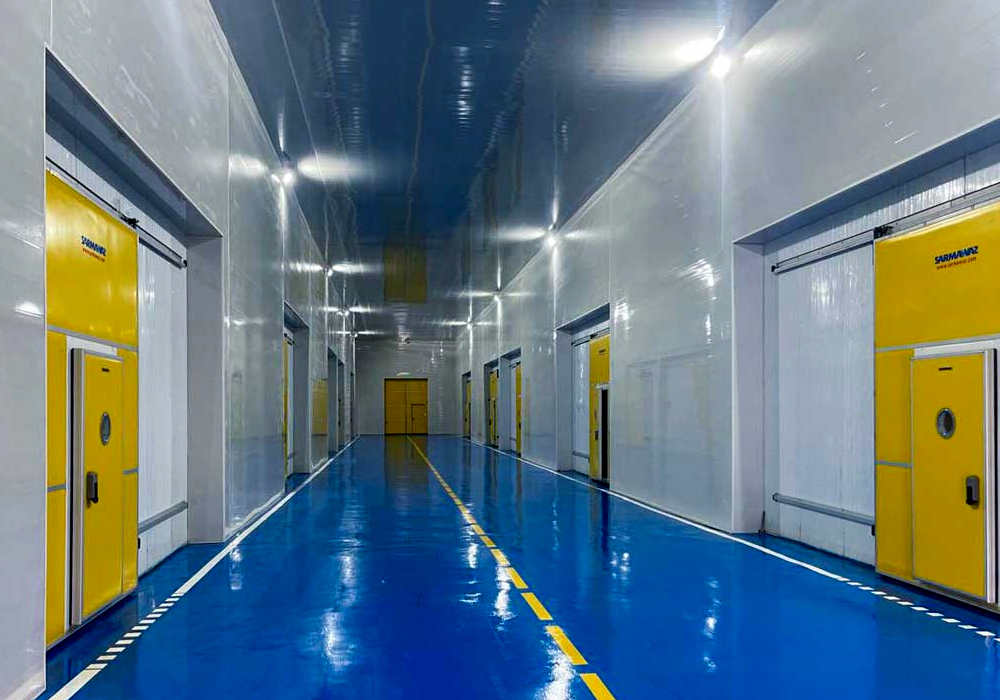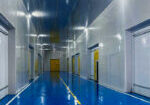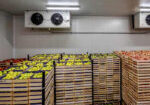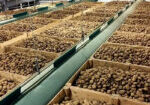Introduction to Dual-Circuit Cold Storage and Its Applications

The prevalence of industrial dual-circuit cold storage in countries can be considered a sign of industrial advancement.
The prevalence of industrial dual-circuit cold storage in countries can be considered a sign of industrial advancement. Nowadays, in order to preserve the freshness of perishable agricultural and food products, large rooms with temperatures significantly lower than the environment, known as cold storages, are utilized. What is a dual-circuit cold storage? It refers to a place that typically maintains two different temperature levels for preserving food items. The temperature of these cold storages ranges from +5 to -33 degrees Celsius, and it must be set either above or below freezing, distinguishing it from other cold storages.
In the design of industrial dual-circuit cold storage, multiple chambers with different temperatures are used to store food, pharmaceuticals, etc. If one chamber for food items becomes empty, its function can be changed for the storage of other food items by adjusting the temperature.
Types of Dual-Circuit Cold Storage:
Since not all food items require the same temperature for staying fresh, this temperature difference can be categorized into two groups: below freezing and above freezing.
Sub-Zero Cold Storage:
These refer to cold storages with temperatures ranging from -12 to -23 degrees Celsius below freezing, suitable for preserving food items with lower freezing points. For example, various types of red meat, chicken, fish, hamburgers, sausages, etc., fall into this category.
Above-Freezing Cold Storage:
The temperature in above-freezing cold storage is typically set between 1 to 5 degrees Celsius above freezing. It is used to preserve the freshness and properties of certain food items such as agricultural and dairy products, fruits, and vegetables. These products may stay in this location for either short or long durations.
Types of Dual-Circuit Cold Storage in Terms of Construction:
Most industrial dual-circuit cold storages are constructed in three main forms:
1. Container (Mobile) Cold Storage:
This type is also known as a mobile dual-circuit cold storage, as it has the capability to be moved and relocated.
2. Hall (Warehouse)
3. Chamber (Room)
Constructing Dual-Circuit Cold Storage:
Due to the diverse import of fruits and vegetables from various parts of the world, the need for their preservation at different freezing points may pose a challenge. By designing and constructing a dual-circuit cold storage, the storage capacity for food items can be increased. If the chambers become empty, they can be effectively repurposed for the storage of other food items. The first phase of construction involves presenting the feasibility plan for the dual-circuit cold storage, which is a written proposal. The purpose of writing the feasibility plan is to thoroughly examine the process of constructing the cold storage, the required facilities, capital, and the amount of space needed.
Advantages of Dual-Circuit Cold Storage:
- Creation of chambers with different temperatures for more specialized food and pharmaceutical storage.
- Flexibility to change the function of chambers in case of no food items and to readjust their temperature.
- Efficient and effective utilization of cold storage space.
- Prevention of further damage due to non-compliance with food safety standards.
Disadvantages of Dual-Circuit Cold Storage:
Since the construction of industrial dual-circuit cold storage has numerous advantages and leads to cost savings, the only minor drawback could be associated with the expenses related to piping and connections in the engine room and above-freezing chambers.
Technical Specifications of Dual-Circuit Cold Storage:
Special equipment is required for the construction of dual-circuit cold storage that effectively preserves food and pharmaceuticals. The technical specifications of dual-circuit cold storage include the following:
Dual-Circuit Cold Storage Compressor:
The compressor is the most crucial component of any industrial dual-circuit cold storage. Its function is to compress the gas used in the cold storage, increasing the gas temperature in the process.
Dual-Circuit Cold Storage Condenser:
The main function of the condenser in a cold storage is to act as a heat exchanger. Gases that have been compressed by the compressor and have elevated temperatures are transformed into liquid by the condenser through the process of cooling.
Dual-Circuit Cold Storage Operator:
The operator is responsible for cooling the interior of the dual-circuit cold storage chambers. This section is comprised of four parts, and it manages the internal cooling of the chambers through piping.
Other Technical Specifications of Dual-Circuit Cold Storage:
Other components used in the construction of industrial dual-circuit cold storage include:
– Dual-Circuit Cold Storage Sandwich Panels:
Modern structures, known as sandwich panels, are used for constructing dual-circuit cold storage today. They are characterized by being lightweight yet highly resistant, and they prevent the entry and exit of air into the cold storage space.
– Dual-Circuit Cold Storage Electrical Plan:
The electrical plan of an industrial dual-circuit cold storage essentially illustrates the overall layout of the refrigeration systems.
– Dual-Circuit Cold Storage Electrical Panel:
The electrical panel of an industrial dual-circuit cold storage is a metal box responsible for directing the entire system and performing the startup, operation control, and shutdown of the devices related to the cold storage.
– Dual-Circuit Cold Storage Motor:
The primary factor in operating cold storage systems is the motor, and cold storages require a powerful motor based on the temperature required to preserve the products.
– Dual-Circuit Cold Storage Flooring:
The flooring of a dual-circuit cold storage must have high resistance to temperature. Otherwise, it will crack and lead to the emergence of bacteria and fungi.






